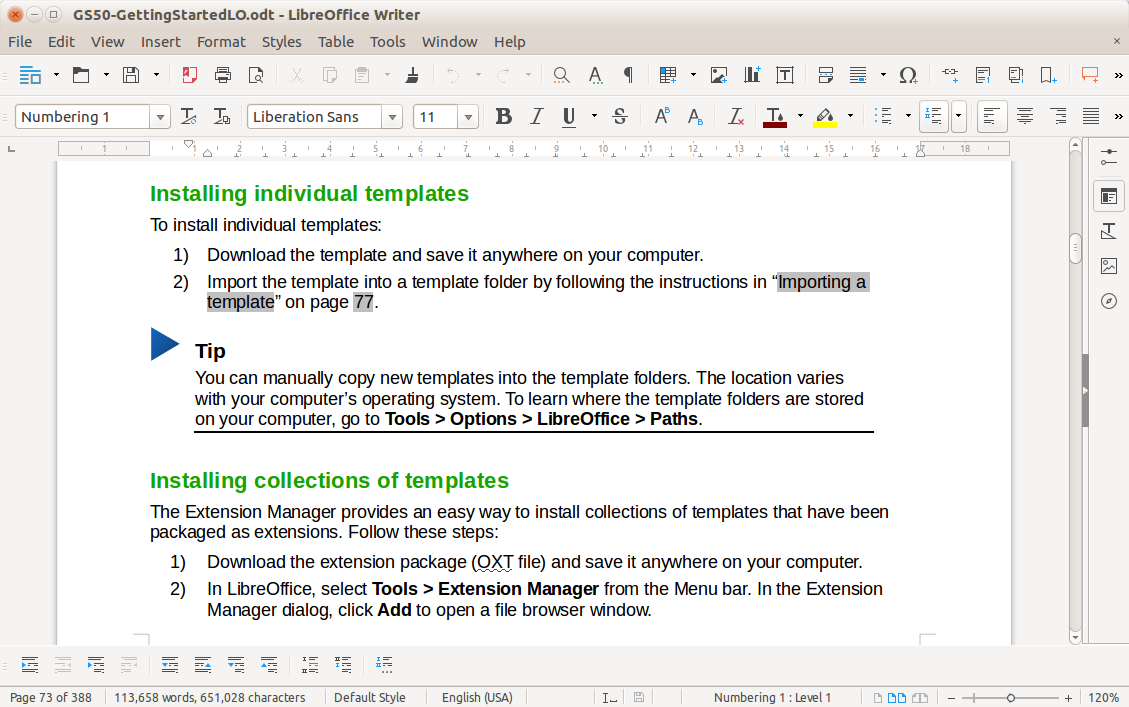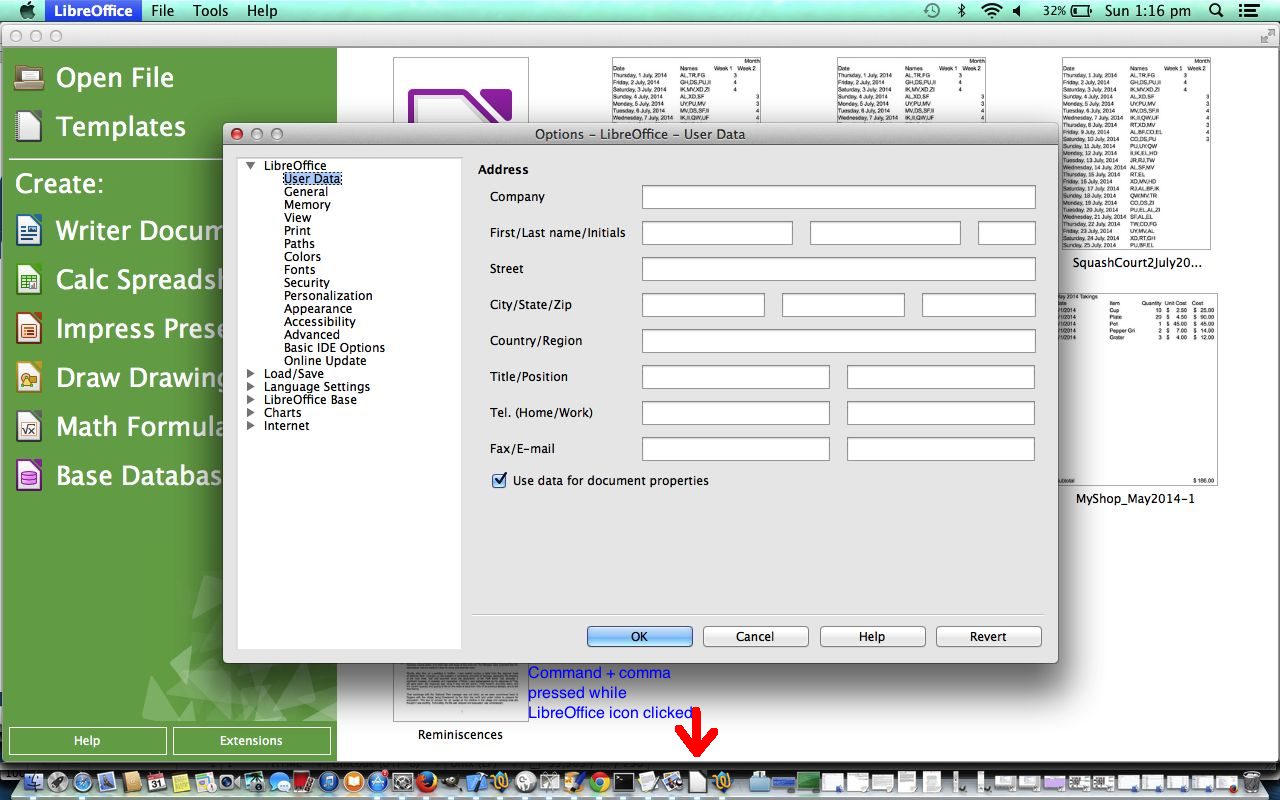LibreOffice was reviewed within my company as a possible replacement to Office 365 (namely the desktop applications Word, Excel, and PowerPoint). Whereas LibreOffice is an excellent program, ranking well above applications like Google Docs, it still isn't exactly a pop-in replacement for Microsoft Office. 2) On a Mac operating system, go to LibreOffice Preferences General on the main menu bar to open the dialog for general options. 3) Select Use LibreOffice dialogs in Open/Save dialogs and, in Linux and Mac OS X operating systems only, Print dialogs to display the LibreOffice.

Using LibreOffice for Arabic and Persian
Among all the open source replications of Microsoft Word LibreOffice might be the best. Its clean interface design and its free updates make superior to other open-source Word imitations such as OpenOffice and NeoOffice. But what makes me write about it here is LibreOffice’s support for right-to-left Arabic-script-based languages and such as Arabic and Persian.
LibreOffice’s Support for Arabic Script

If you are a Mac user who works with Arabic/Persian script you might know that Microsoft Word does not render Arabic script correctly on Mac. Why the world’s most popular text editor still does not support Arabic (one of the world’s major scripts) after about 30 years is still a question to me but I am not going to write about that in this post. Here I am going to show you how to activate Arabic script on LibreOfice and how to use it to to type in Arabic-script-based languages (Arabic, Persian, Urdu, etc.) or to open/save Arabic-script files in Microsoft Word format (“.doc”).

LibreOffice can open your “.doc” documents and you can save your documents in Microsoft Word format as well. But first you need to:
1 Step one: Open LibreOffice. To change the default setting make sure that no document is open. Under “Libre Office” in the menu go to Preferences.
2 In the Preferences panel go to Languages. Checkmark Enabled for Complex text layout (CTL). That is the term used for Arabic script and right-to-left (RTL) languages. Also choose your language (Arabic, Persian, Hebrew, etc.) from the drop-down menu under CTL.
3 Again in Preferences panel go to Basic Fonts (CTL) under LibreOffice Writer to choose the fonts you want to use when you type in Arabic-script or any RTL language. Geeza Pro is Mac’s default font for Arabic-script languages but you can install your own Arabic and Persian fonts and choose them here. (Note: My suggested font is still Geeza Pro, since some fonts do not follow the standards and consequently do not work properly in software like LibreOffice.) Save your preferences by clicking on OK.
4 Now open a text document. The menu expands. Under Tools go to Customized…. You go there to customize your toolbar and add two shortcuts icons for Right-to-Left (RTL) and Left-to-Right (LTR) to it.
5 Choose Toolbars from the top menu. Make sure Standard is chosen as your toolbar under LibreOffice Writer Toolbars. Then click on “Add”.
6 From the list choose Format. Under Format choose Right-to-Left and add it to your toolbar. Repeat the same process to add Left-to-Right to your toolbar as well.
7 Use the arrows to re-position the Right-to-Left and Left-to-Right on your toolbar. Save the customized setting when you are done.
Libreoffice For Mac Free
8 Two new icons for Right-to-Left (RTL) and Left-to-Right (LTR) appear on your toolbar. Choose your language from Mac’s top menu, then click on RTL icon and begin typing. The text should be right-to-left and typed in the font you chose as default for your RTL language.
Now begin a new paragraph and choose LTR. Switch to a Latin-script language like English or German and type a few words. The new paragraph should be left-to-right in typed in the default font for Latin-script-based languages. If your test does not work properly begin the whole process again and make sure you have set up everything correctly.
That is it! LibreOffice is ready for Right-to-Left language(click me).
The problem
As I conduct interviews for my dissertation research, I’ve been trying to figure out an open source database for storing interview notes and keeping track of the people and organizations I’m talking to. My ideal requirements are simple:
- The format should be open source.
- The format should be portable and not require an underlying server (sorry MongoDB and MySQL)—this way I can save the file in an encrypted file container for IRB data protection purposes.
- The format should be easy to access with multiple languages (especially R and Python), ideally without external dependencies like Java.
- The format should be compatible with some sort of Microsoft Access-esque form GUI to allow for easy data insertion.
However, finding the right combination of programs and formats has been slightly more difficult. SQLite is the best format, given that it’s the most widely deployed and used database engineand is open source and has native support in both R1 and Python. The only thing it lacks is a nice form-based GUI front end.
There are plenty of SQLiteviewers, but I haven’t found any that let you create Access-like forms. I could use Python to program my own GUI (or even get fancy and learn Swift and make a native Cocoa app), but that seems like an excessive amount of work.
LibreOffice Base has excellent support for database-backed forms, but under the hood, LibreOffice uses the Java-based HSQLDB, which does not have native R and Python support and requires older Java runtime environments.
The solution
Libreoffice For Apple
Fortunately there’s a way to use an SQLite database as the backend for LibreOffice Base using an ODBC driver, giving the best of both worlds: an open, universal, Java-free database behind a customizable form-based GUI.
There are official instructions for doing this on Linux and Windows, but there’s nothing about doing it in OS X. So here’s that missing tutorial.
- SQLite is already installed on OS X. Create a new SQLite database using
sqlite3in Terminal (or even easier, use a GUIprogram). Add some tables to it, or don’t—it doesn’t matter. You just some sort of database file. - Download the SQLite ODBC driver for OS X. The page includes a link to a precompiled version (currently it says “Steve Palm kindly provided a build of version 0.9993 for MacOSX 10.{6,7,8,9,10,11} on Intel as installer package (sqliteodbc-0.9993.dmg)'). Install the driver by opening
sqliteodbc-0.9993.pkg. - Download an ODBC manager app. Prior to OS X 10.5, Apple included one of these, but for whatever reason they stopped with Snow Leopard. There are two that work equally well: ODBC Manager and iODBC Administrator.
- Open the ODBC manager/administrator app. Add a new driver using these settings:
- Add a new User DSN (Data Source Name). Create a new key named “database” and use the full absolute path to the SQLite database file as the value:
- Quit the ODBC manager. The SQLite file is now accessible in any program that uses ODBC.
- Open LibreOffice and create a new Base database. In the wizard, select “Connect to an existing database” and choose “ODBC”:
- Click next to select which ODBC database to load. If you click on “Browse…”, you should see the name of the SQLite database you set up as a DSN earlier.
- Click on “Finish.” LibreOffice will prompt you to save an
.odfdatabase. This is fine—it’s not actually saving the database, just the accompanying form data.2 - Create new tables and forms using LibreOffice:
Any time you save, all edits will occur on the SQLite file. Create a table, insert some records, and open the SQLite file in a GUI program to see all the changes. Magic!
Even though there are 10 steps, it’s not too difficult. tl;dr version: (1) install an SQLite ODBC driver, (2) install an ODBC manager, (3) use the manager to configure the SQLite ODBC driver and connect to an existing SQLite database, and (4) connect to the SQLite database through ODBC with LibreOffice Base.
Perfect!
Libreoffice Mac Os X
Technically RSQLite is a separate package, but it’s a dependency of dplyr, which is as important as base R in my book. ↩︎
I think… I haven’t actually checked or tested this. ↩︎

Comments are closed.